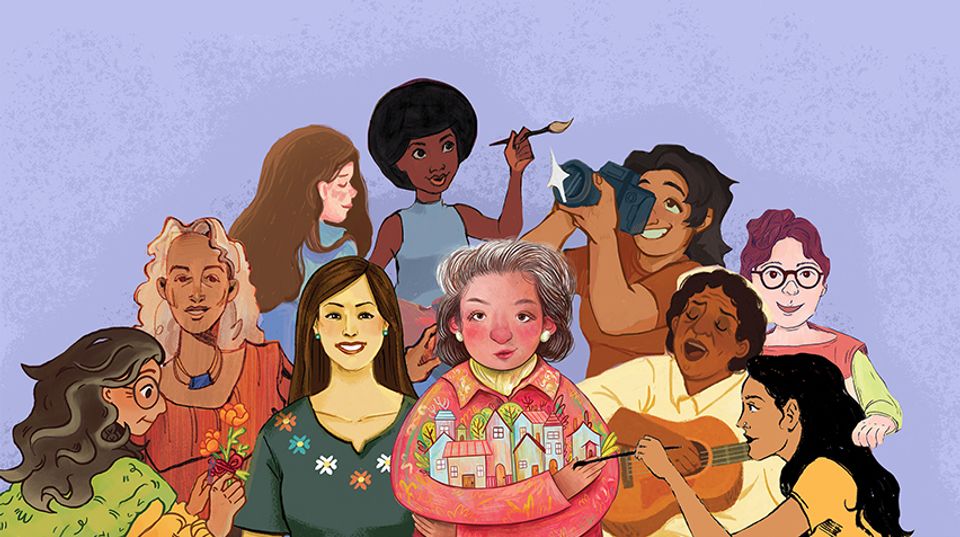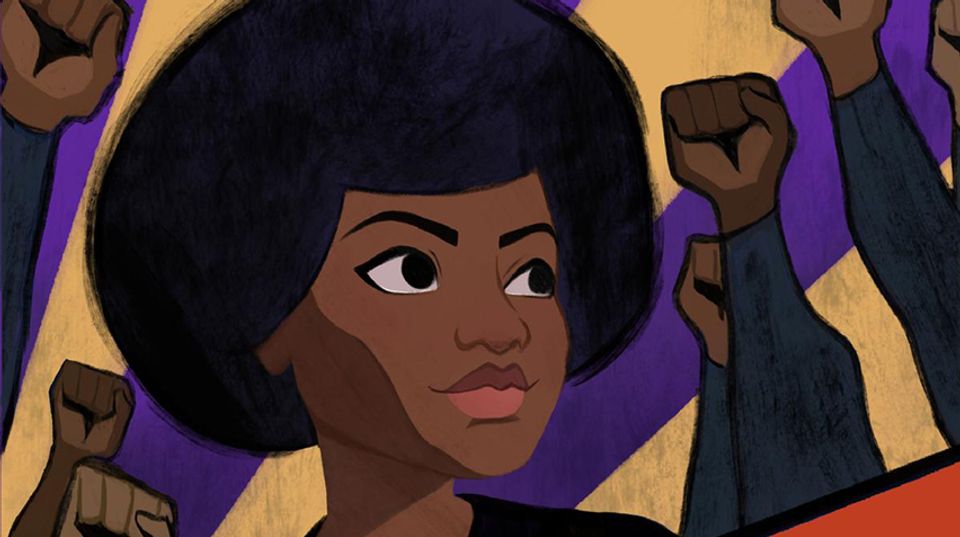Barbara Jones-Hogu

Photograph of Barbara Jones-Hogu in her studio at the Institute of Design at the Illinois Institute of Technology (IIT), Chicago, IL, c. 1968. Courtesy of Lusenhop Fine Art, Cleveland
- Biography
Barbara Jones-Hogu was an artist and original member of the artist collective African Commune of Bad Relevant Artists (AfriCOBRA) founded in Chicago in 1968. Exploring personal, political, and philosophical ideas, her practice rendered how, in her words, “Art can be a liberating force.”
Jones-Hogu received her BA in art education at Howard University in 1959 and began her practice as a painter. In 1967, as part of the Organization of Black American Culture Visual Artist Workshop, she contributed to a Chicago mural titled Wall of Respect. In the late 1960s, Jones-Hogu enrolled in the design and printmaking MS program at the Institute of Design at the Illinois Institute of Technology (IIT), building on her exposure to printmaking at the School of the Arts Institute of Chicago earlier in the decade. At the Institute of Design, Jones-Hogu developed woodcuts, etching, and lithography featuring red, white, and blue hues such as While Some are Trying to Get Whiter (1969, SAAM) that were sharp critiques of racism and social injustice and, in her words, “based on very negative concepts of what was happening in the USA.”
The tone of Jones-Hogu’s messages shifted from protest to Black empowerment and affirmation after she joined AfriCOBRA in 1968. Screenprints like One People United (1969, SAAM) and Rise and Take Control (1971, SAAM) exemplify the group’s goal of using bold “cool-ade” colors and expressive lettering to widely educate viewers through, in her words, “Black, positive, direct statements.” Related prints incorporated an array of Black Power iconography such as the raised fist, a central salute of solidarity. Jones-Hogu’s depiction of the iconic gesture drew inspiration from Elizabeth Catlett’s sculptures, whose Mexico studio she visited in the summer of 1968, and Tommie Smith and John Carlos’s salute at the 1968 Summer Olympics. Fashion and hairstyles likewise remained key to Jones-Hogu, like in When Styling (1973, SAAM), as integral expressions of Black creative and political resistance.
During the 1970s, Jones-Hogu also printed on textiles, including scarves that she sold at local street fairs with a craft group. She taught this technique to students at Malcolm X College, where she worked for three decades. Soon, she stopped printmaking and returned to painting, and in the late 1970s painted canvases addressing spirituality and femininity. By the 1990s, Jones-Hogu engaged the “union of nature and the soul” and themes of “cosmic, spiritual, and universal love” through paintings and multimedia works. Late in her career, Jones-Hogu began making digital imagery and documentary films.
Jones-Hogu’s expressive practice across the decades has contributed to the long tradition of visual activism in shaping American culture. “My art imagery always has had to have a message,” she stated, “The message in each image is for its viewer as well as for me.”
Authored by Gabriella Shypula, American Women’s History Initiative Writer and Editor, 2024.
Related Posts
















